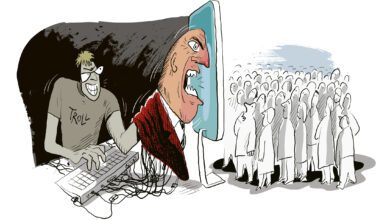
If you Google “fax machine sales history” or some similar combination of terms, an interesting phenomenon occurs. You will find articles calling the fax an obsolete or even dead technology mixed with articles talking about the miracle of fax machines still be in use and refusing to die despite the Internet. My sympathies are with the former view-the facsimile machine (or fax for short) was a fascinating late 20th century phenomenon. To take the United States case, in 1970 there were only 25,000 fax machines in the country. By 1980, the year that a global fax standard endorsed by Japan was adapted, they had increased by order of magnitude, and by 1990 they had increased by over an order of magnitude again, to almost 5,000,000 machines. But around that time the logarithmic growth began to slow, and 1997 represented the peak year of fax sales in the U.S. After that, sales began to plummet in the U.S., ultimately followed by the rest of the world. Japan, the major manufacturer of fax machines, and home to an ageing population was one of the last hold-outs, but even there the popularity of the fax began to dwindle. And sales numbers are misleading because fax ability continues to be built into multi-function machines, but may not be used. However, to turn the Bard’s words around, I have come not to bury faxes but to praise them”¦or at least their long history.
Given that there were only 25,000 fax machines in the U.S. in 1970, we might think that this is a post-war technology analogous to the microwave oven. Indeed the trajectory seems similar (except that microwaves have not declined in popularity yet). The commercial microwave oven, based on World-War-II technology, was introduced in 1947; in 1970 40,000 units were sold in the U.S.; by 1975, annual American consumption was 1,000,000 units.
The fax, however, was not a recent development. The resonant-cavity magnetron, the core of a microwave oven, was developed in the 1920s and 1930s, and it was not until exactly 75 years ago (21 February 1940) that Randall and Boot demonstrated their multiple-cavity device that enabled radar. Prior to that, the microwave oven did not exist in any form and was, in fact, unthinkable. The fax also celebrates an anniversary this month-but it is twice as old as the microwave! One hundred and fifty years ago, on 16 February 1865, an official service of the French Telegraph Agency was started to transmit and receive faxes between Paris and Lyon over telegraph lines.
The technological roots of the fax go back to the beginnings of telegraphy. As soon as inventors began to explore how electricity propagated on a wire over long distances could, at the other end, cause mechanical motion that could transfer information, they also began to wonder if there was a way that electrochemical action could transmit images. The first device that we would recognize as a fax was patented by the Scotsman Alexander Bain in the UK in 1843″¦just six years after the first telegraph patents (Morse in the U.S. and Cook and Wheatstone in the UK)!
The French telegraph service was based on the “Pantelegraph” system of Abbé Giovanni Caselli’s, which he had developed as early as 1856. The Pantelegraph was replaced after two years by the “Kopiertelegraphen” of Bernhard Meyer. Yet, despite continual improvements, the service was not a commercial success-it folded a few years later-nor were any subsequent attempts in the late 19th and early 20th centuries. Fax did find some use with the military beginning in World War I, but it would not be until the 1960s that fax began to emerge as a mainstream technology.
Why this contrast with the microwave oven and other quickly adopted technologies? Despite the early understanding of the science, fax technology was a huge multidisciplinary engineering challenge involving electricity, chemistry, and mechanics. Therefore, I am happy to report that the interested reader can read the full story of facsimile machine technology on the Engineering & Technology History Wiki (ETHW). Wait, the attentive reader of Today’s Engineer, says. ETHW? The IEEE History Center always refers me to the IEEE Global History Network (GHN). What is the ETHW? Well, thanks to grant from the United Engineering Foundation, IEEE has partnered with the Founder Societies (AIME, AIChE, ASCE, ASME) plus SPE and SWE to convert the GHN into the ETHW, a site for the history of all of engineering! We will cherish the memory of the GHN, but, as the fax case illustrates, what is needed for the public to have an increased understanding and appreciation of technology is a single resource that covers the broad and deep history of engineering across all fields, and not stop the story at arbitrary disciplinary boundaries. Partnering with the UEF and with our sister societies has enabled that to happen.
The ETHW still has the great features of the GHN-topic articles, oral histories, the ability for IEEE organizational units (and the OUs of our partners) to archive their institutional histories, and the opportunity for engineers and technologists of all stripes to tell their own first-hand histories-but with greatly enhanced depth and breadth. I hope you will visit the new site and participate in its mission to preserve and promote the proud heritage of engineering.
Michael N. Geselowitz, Ph.D., is staff director at the IEEE History Center at the Stevens Institute of Technology in Hoboken, N.J. Visit the IEEE History Center’s Web page at: https://www.ieee.org/about/history_center/index.html.






